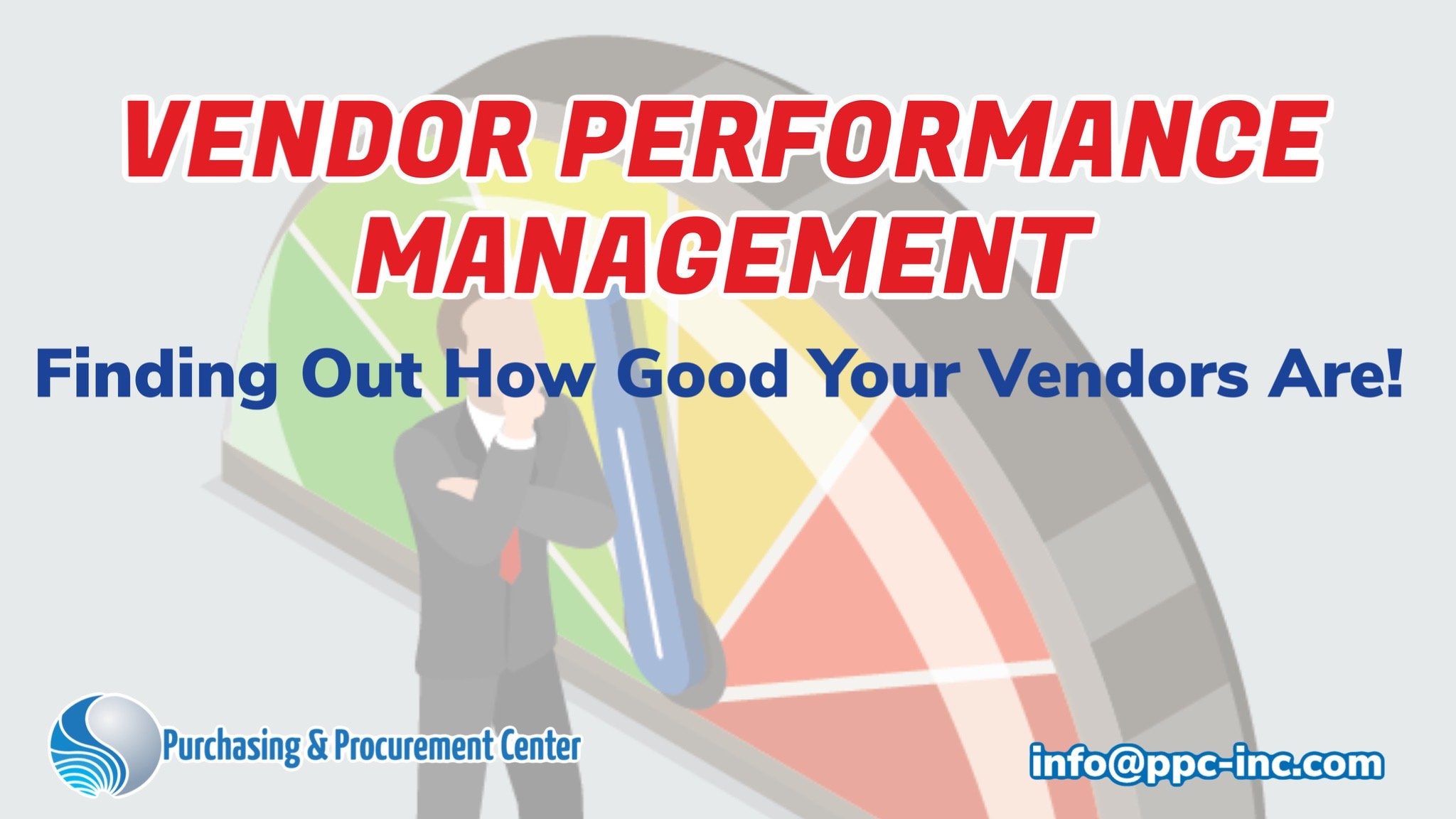Vendor Performance Management
11 Ways to Find How Good Your Vendors Are!

Vendor performance management (VPM) is the monitoring and analyzing of the reliability, quality and performance of a company’s vendors.
It allows your company to improve your efficiency and profits, reduce stock levels and inventory costs and leads to more customer satisfaction.
In this guide, we will take a look at what vendor performance management is and 11 ways for you to find out how good your vendors really are.
You Might Also Like: 10 Purchasing Manager Skills You Need to Excel in Procurement!
What is Vendor Performance Management (VPM)
Vendor performance management (VPM) is the process of evaluating and monitoring the performance of suppliers based on agreed-upon Key Performance Indicators (KPIs).
Whilst vendor performance management may be relatively easy to define, in real life it is very difficult to maintain. It requires constant real time information about the vendor’s performance, formal procedures and a profitable two-way communication between the vendor and the purchaser.
Vendor performance management is usually measured by a series of agreed and contractual Key Performance Indicators (KPI’s). Most VPM systems use either dashboards or balanced scorecards to measure a vendor’s performance.
11 Ways to Find How Good Your Vendors Are!
1. Assess Delivery Lead Times
One of the most critical KPIs in vendor performance management is delivery lead time. This metric measures the time it takes for a vendor to fulfill an order from the moment it’s placed to the moment it’s delivered.
Consistent delays can disrupt your supply chain, leading to lost sales and dissatisfied customers. Regularly monitoring and comparing delivery lead times across vendors helps identify patterns and enables you to take corrective action when necessary.
2. Monitor Communication Time Lags
Effective communication between you and your vendors is vital for maintaining a smooth operation.
Any time lag in communication—whether it’s responding to emails, answering queries, or providing updates—can create bottlenecks and delays.
Incorporating communication time lags into your VPM system allows you to measure responsiveness and ensure that your vendors are proactive and engaged in the partnership.
3. Evaluate Product Quality
Quality is non-negotiable when it comes to vendor performance. You should consistently assess the quality of the products supplied by your vendors.
This includes conducting regular inspections, soliciting feedback from your team, and analyzing customer complaints.
A drop in quality can indicate issues in the vendor’s production process or supply chain, necessitating immediate attention.
4. Track Pricing Consistency
Another essential KPI is the stability of prices offered by your vendors. Frequent price changes can disrupt your budgeting and pricing strategies.
By monitoring price consistency, you can identify trends and determine whether your vendors are maintaining fair pricing or exploiting market conditions. This insight will help you negotiate better terms and ensure long-term cost-effectiveness.
5. Analyze Payment Terms
Payment terms are a critical aspect of your relationship with vendors. Flexible payment terms can improve cash flow and provide your business with greater financial stability.
Regularly reviewing and comparing the payment terms offered by different vendors allows you to optimize your financial arrangements and strengthen your partnerships.
6. Review Under and Over Deliveries
Consistency in order fulfillment is crucial for maintaining a well-functioning supply chain. Under-deliveries can lead to stockouts, while over-deliveries can result in excess inventory, both of which can negatively impact your bottom line.
By tracking under and over deliveries, you can identify any discrepancies and address them with your vendors to ensure accurate and reliable order fulfillment.
7. Be Aware of Vendor Competitiveness
Vendor competitiveness is a vital metric that can impact your overall supply chain efficiency. This involves evaluating how well your vendors stack up against their competitors in terms of pricing, quality, and service levels.
A competitive vendor can provide better value for money, more innovative solutions, and a stronger partnership. Regular benchmarking exercises can help you maintain a roster of high-performing vendors.
8. Evaluate Their Financial Stability
A vendor’s financial stability is a key indicator of their long-term reliability. Financially unstable vendors may struggle to meet their obligations, leading to supply chain disruptions.
Regularly reviewing your vendors’ financial health, including credit ratings and financial statements, ensures that you are working with vendors who can maintain consistent service levels over time.
Check Out: COST REDUCTION IN PURCHASING & PROCUREMENT!
9. Use a Dashboard Approach
A dashboard approach to VPM provides a quantitative, 2D view of vendor performance by measuring a specific set of KPIs.
This method offers a clear and straightforward visual representation of each vendor’s abilities and compliance with your standards.
While this approach is highly effective for tracking and comparing numerical data, it may not capture the full complexity of the vendor relationship.
10. Implement a Balanced Scorecard Approach
The balanced scorecard approach offers a more comprehensive, 3D view of vendor performance by considering a range of weighted metrics across four key areas:
- Relationship
- Cost Management
- Delivery
- Quality
This method allows you to assess vendor performance from multiple angles, providing deeper insights into how well they are contributing to your business objectives.
The balanced scorecard approach also allows for the inclusion of qualitative factors, making it a more holistic tool for VPM.
11. Use a Vendor Performance Management Software
The implementation of vendor performance management software has revolutionized the way organizations manage their vendors.
These systems allow for the seamless integration of KPIs, dashboards, and balanced scorecards, providing real-time insights into vendor performance.
They also facilitate collaboration between vendors and purchasers, making it easier to address issues, negotiate terms, and maintain strong partnerships.
Check Out This Training Program!

By implementing these 11 strategies, you’ll be well-equipped to identify how good your vendors truly are and make informed decisions that will drive your business forward.
Vendor performance management is a dynamic and ongoing process, and staying proactive in this area will yield significant long-term benefits for your organization.
Interested in truly revamping your vendor performance management skills? Check out our training on Supplier Selection, Training, and Evaluation!
Frequently Asked Questions (FAQs)
Q1: What are the most important KPIs to track in vendor performance management?
A: The most important KPIs typically include delivery lead times, product quality, pricing consistency, communication efficiency, and financial stability of the vendor.
Q2: How does the balanced scorecard approach differ from the dashboard approach in VPM?
A: The balanced scorecard approach offers a more comprehensive view by evaluating weighted metrics across multiple areas like Relationship, Cost Management, Delivery, and Quality, while the dashboard approach provides a straightforward, quantitative view focused on specific KPIs.
Q3: What are the benefits of using vendor performance management software?
A: VPM software provides real-time insights, streamlines the evaluation process, and facilitates better collaboration between vendors and purchasers, leading to improved supply chain efficiency and stronger vendor relationships.
Return from vendor performance management to Vendor Management
Return from vendor performance management to purchasing procurement center Homepage

